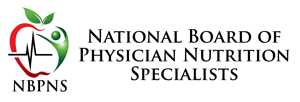Case 1
AR is a 5 mo female with h/o poor weight gain and a rash:
-4 mo: well child check, poor weight gain noted;
-4-1/2: mo f/u – diaper rash + eczema; Rx w/ cream
-5 mo: Dx worse eczema; rash spread to trunk; reddish dots; changed Rx
-5-1/4 mo: worse rash (spread & red dots ® brownish & confluent); + vomiting; + swollen legs and face; sent to E.R. ® home;
-next day, seen by PCP; rash worse ® derm consult ® admit to The Children’s Hospital
Question 1: What are the risk factors for this patient to have malnutrition?
- Documented poor weight gain at 4 mo. well child check
- Worsening rash not responsive to treatment? – Possible nutrient deficiency
- Recent report of vomiting
- Edema in legs and face
Past Medical History:
-4 mo: well child check, poor weight gain noted;
-4-1/2: mo f/u – diaper rash + eczema; Rx w/ cream
-5 mo: Dx worse eczema; rash spread to trunk; reddish dots; changed Rx
-5-1/4 mo: worse rash (spread & red dots ® brownish & confluent); + vomiting; + swollen legs and face; sent to E.R. ® home;
-next day, seen by PCP; rash worse ® derm consult ® admit to The Children’s Hospital
Milk Supply:
-Never seemed as good as w/ first child; no pumping
Other Foods:
-Started vegetables (~ 1/2 jar/d) at ~ 4-
-1/2 mo; + h/o tea & some fruit juice; h/o amounts & exact timing unclear;
Development:
-Meds/supplements : none
-Normal by hx; fussy & listless recently
-ROS: stools seemed “mucousy” per MOC; no blood;
-Hx no weight gain between 2 & 4 mo per MOC;
-No fever, cough, resp Sx, ill contacts;
-FHx – unremarkable; SHx – lives w/ parents, sibling;
Question 2: Any other symptoms or risk factors for malnutrition?
- Poor breast milk supply without supplementation.
- Complementary foods/liquids are of low nutrient density with no protein.
- Fussy and listless recently.
- Flat weight gain curve between 2 and 4 mos.
- Mucousy stools on primarily breast milk diet – expect them to be seedy.
Anthropometry:
-Weight: 5.55 kg (_____%)
-Length: 57 cm (_____%)
-Head circumference: (41.5 cm) (______%)
-Weight-for-Length: ______%
Question 3: What is your assessment of her growth parameters?
- Wt/age: 10th %
- Length/age: less than 5th %
- OFC/age: 25-50th %
- Wt/length: 75th %
- Length age = 2 months
- 50th % length for her age = 64 cm, % of median = 89%
Pt exhibits significant growth stunting. Wt for length is falsely elevated due to fluid retention/edema and expect weight to fall initially as patient is re-fed.
(Underweight? Stunted? Wasted?)
Plot AR’s growth parameters on CDC growth charts.
Physical Exam:
-Gen’l: Well developed Hispanic female w/ puffy face, not wasted; fussy
-Skin: hyperpigmented, peeling, cracking, rash w/ bleeding in some areas; multiple punctate reddish brown papules over hands & trunk;
-HEENT: non-icteric; no tears; + thrush; scalp w/ lesions ~ skin;
-Lungs – clear; Heart – RRR w/o murmur
-Abdomen : large liver
-Extremities: 1 – 2 + pitting edema up to knees;
-Neuro: grossly intact
Question 4: What physical findings of malnutrition does AR have?
- Puffy and edematous face
- Pitting edema to knees
- No tears Hepatomegaly
- Hyperpigmented peeling cracking rash and multiple puctate reddish brown papules over hands and trunk (likely representing multilple nutrient deficiencies, including protein, zinc, and niacin).
Laboratory values:
-Electrolytes: normal (Na, K, Cl, HCO 3 )
-Total protein: 4.2 (nl range 5.5 – 7.5)
-Albumin: 2.3 (nl range 3.1 – 5.3)
-Hematocrit: 28% (nl range 30 – 41)
Question 5: What is AR’s diagnosis?
AR’s symptoms, diet history, and growth parameters are consistent with the diagnosis of Kwashiorkor classification of protein energy malnutrition. The deprivation of protein especially during periods of high need (such as during growth in infancy and childhood) results in the classic symptoms of kwashiorkor: fatigue, lethargy, loss of muscle mass, edema, moon facies, large protuberant abdomen, mucousy stools, linear growth stunting, and poor weight gain. There can also be skin changes including dermatitis, and changes in skin pigment and dewquamation, “flaky paint”. Also, a protein deficient diet si commonly associated with other nutrient deficiencies that can contribute to dermatologic findings (rash of zinc deficiency and pellagroid type rash due to niacin deficiency). Hair may lighten (flag sign) and become thin and brittle. There is also increased risk of infections because of depressed immunity. Without treatment Kwashiorkor leads to death. If treatment is delayed or undertaken without careful medical supervision there can be significant morbidity, and a child can be left with developmental deficits.
Question 6: What would be the principles of managment/treatment?
- Resolving life-threatening conditions
- Enteral feeding
- Monitor electrolytes
- Avoid hypoglycemia
- (Treat infections)
- Cautious restoration of nutritional status
- Begin SLOWLY
- Diet of high quality protein, fat (typically formula via NasoGastric tube); start at maintenance, not rates for catch-up
- Micronutrient supplementation (K, P, Mg, Zn, Vit A, not iron)
- Nutritional rehabilitation
- Once edema resolved, advance feeds ( ³ 1.5x normal energy; 3-4 x normal protein)
